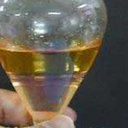Eugenol reduces the expression of virulence-related exoproteins in Staphylococcus aureus.
Từ khóa
trừu tượng
Eugenol, an essential oil component in plants, has been demonstrated to possess activity against both gram-positive and gram-negative bacteria. This study examined the influence that subinhibitory concentrations of eugenol may have on the expression of the major exotoxins produced by Staphylococcus aureus. The results from a tumor necrosis factor (TNF) release assay and a hemolysin assay indicated that S. aureus cultured with graded subinhibitory concentrations of eugenol (16 to 128 microg/ml) dose dependently decreased the TNF-inducing and hemolytic activities of culture supernatants. Western blot analysis showed that eugenol significantly reduced the production of staphylococcal enterotoxin A (SEA), SEB, and toxic shock syndrome toxin 1 (the key exotoxins to induce TNF release), as well as the expression of alpha-hemolysin (the major hemolysin to cause hemolysis). In addition, this suppression was also evaluated at the transcriptional level via real-time reverse transcription (RT)-PCR analysis. The transcriptional analysis indicated that 128 microg/ml of eugenol remarkably repressed the transcription of the S. aureus sea, seb, tst, and hla genes. According to these results, eugenol has the potential to be rationally applied on food products as a novel food antimicrobial agent both to inhibit the growth of bacteria and to suppress the production of exotoxins by S. aureus.



